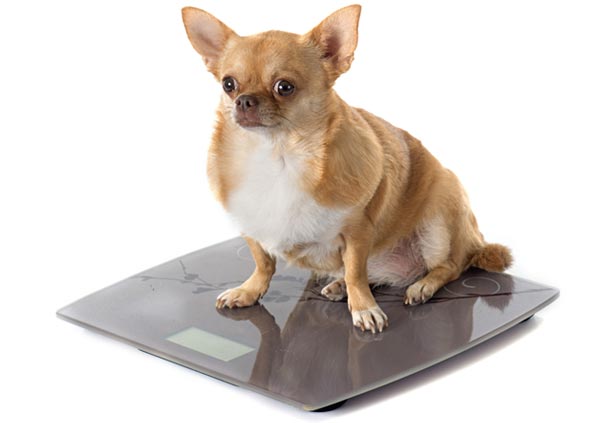
When we think of what could be placing our pets at the highest health risk, we might imagine cancer or heart disease as the culprit, but it’s actually many instances of them becoming overweight and obese that’s putting their lives in jeopardy. According to APOP (Association for Preventing Pet Obesity), they estimate that 54% of dogs are either overweight or obese in America.
Feeding them table scraps, too many unhealthy treats and a lack of exercise seem to be the biggest causes for this growing problem. Even if they are eating only kibble and regular processed pet foods, some owners are leaving out an open buffet for them to eat from all day long and this is also contributing to their growing size. While an extra pound or two may not seem that much to us as humans, for animals it can be 10% or more of their entire body weight.
Health Hazards
Being overweight or obese is also putting them at a greater risk for developing a number of other dangerous and potentially deadly health-related issues like:
- Diabetes
- Heart disease and other cardiovascular problems
- High blood pressure or hypertension
- Being 50% more susceptible to contracting cancer
- Impaired hormone function and release
- More stomach problems and difficulty with digestion
Other gastrointestinal conditions exist with those animals who are overweight when they can suffer from diarrhea, constipation, stomach ulcers and an increased level of flatulence. Those extra pounds are also putting additional pressure on their bones, joints, muscles and even their internal organs, making their lives unnecessarily painful.
Dietary Dilemmas
Just like with human children, it can sometimes be difficult to get our four-legged friends to eat healthier. Your veterinarian will make the best judgment when it comes to how much and how often to feed your dog along with some healthier alternatives. A dog’s diet needs to be reflective of many factors including their current weight, age, breed and other important considerations.
For example, when it comes to snacks and treats, many people might be surprised to learn that many canines actually enjoy eating fruits and vegetables. Some dogs consider carrots a delicious chew toy and will gnaw on them until there’s nothing left. Other owners are adding fresh fruits and vegetables to their food to cut down on starches and fiber within their regular diet.

Simple Solutions
For anyone who has struggled with their weight, the solution may seem simple enough, eat less and move more. While we can control how much we eat, drink and work out, our animals usually cannot. So it’s up to us as their master to put them on the right track when it comes to a healthier diet and getting more exercise.
Obviously you should always consult with your veterinarian before changing your pet’s diet and exercise regime, but be sure to discuss these important topics with them. And most of all, when you do reward your animal, make sure you’re giving them natural, healthy treats along with plenty of love and affection.
Author Bio
Amber Kingsley is a former art history student turned freelance writer who lives in Santa Monica, CA. This travel junkie has a goal to visit every country in the world. She has backpacked through Europe and South America with an eye on conquering Asia next. This peppy, perky writer loves pets, photography, and music.